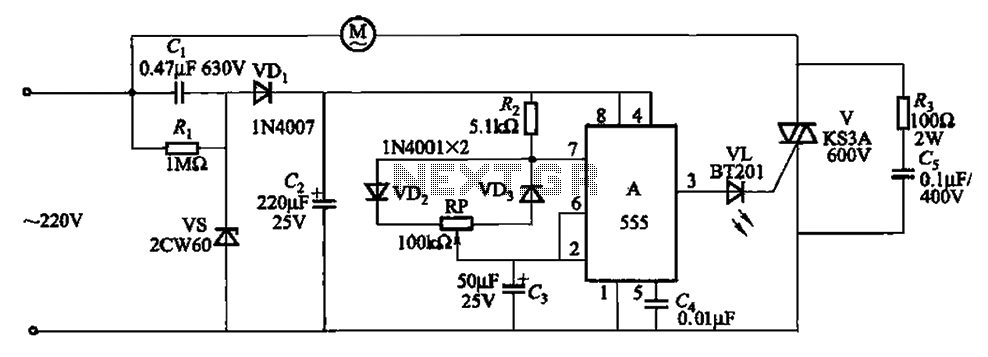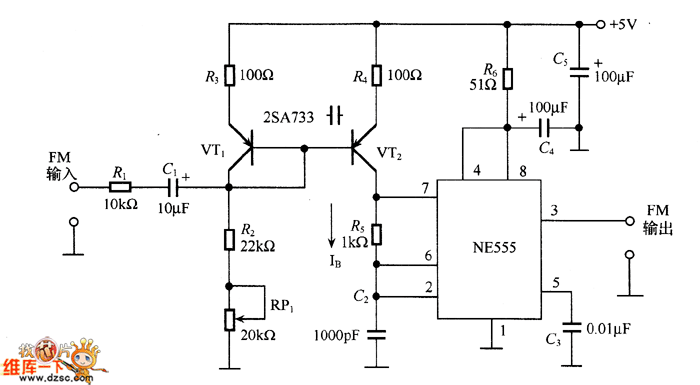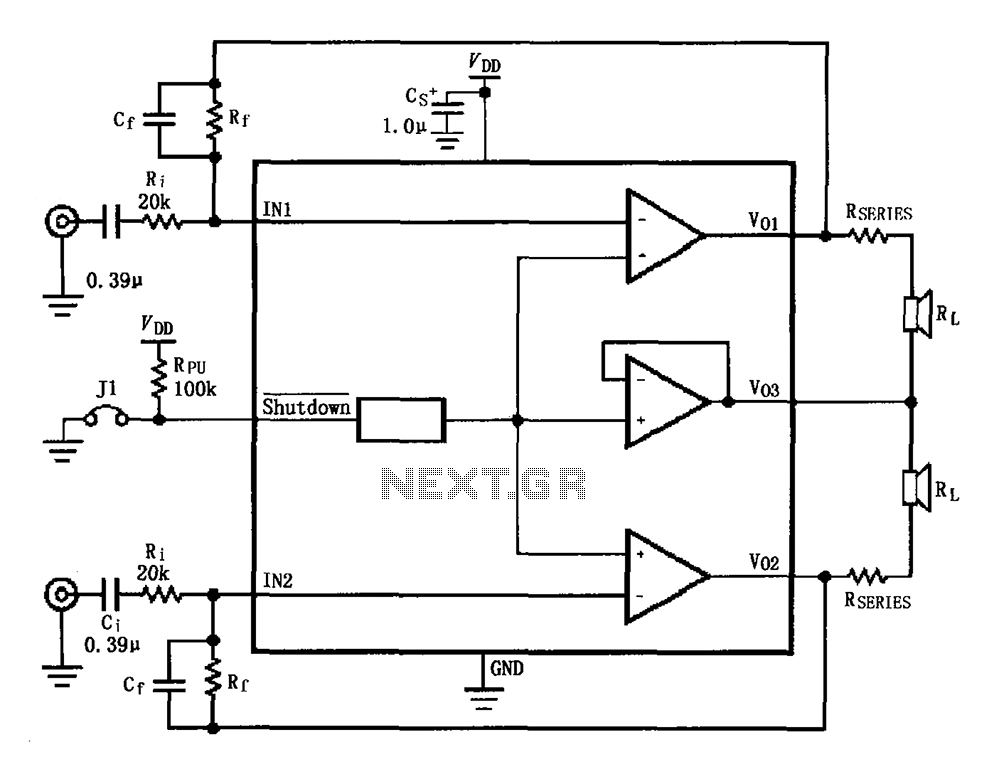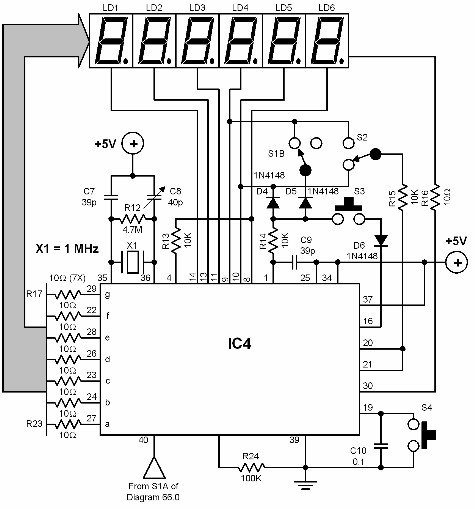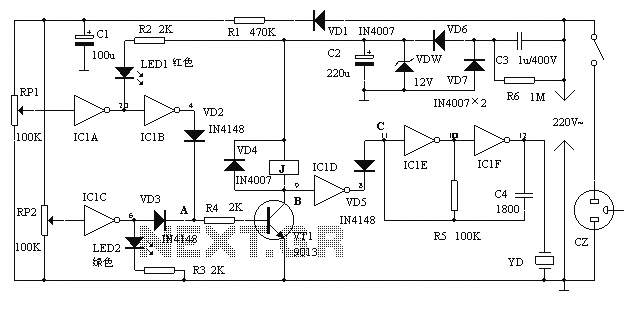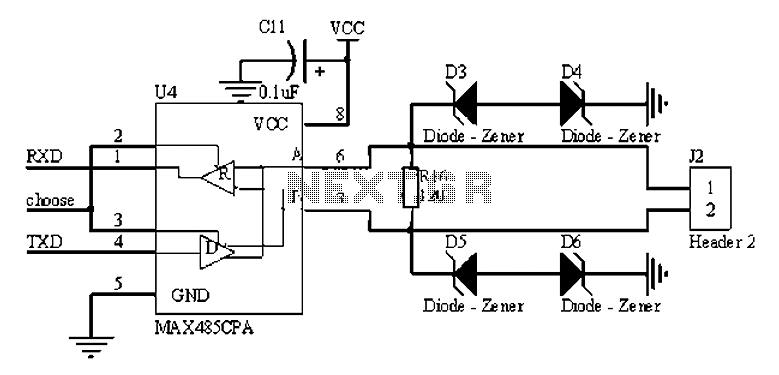
LED strip meter circuit diagram of a point
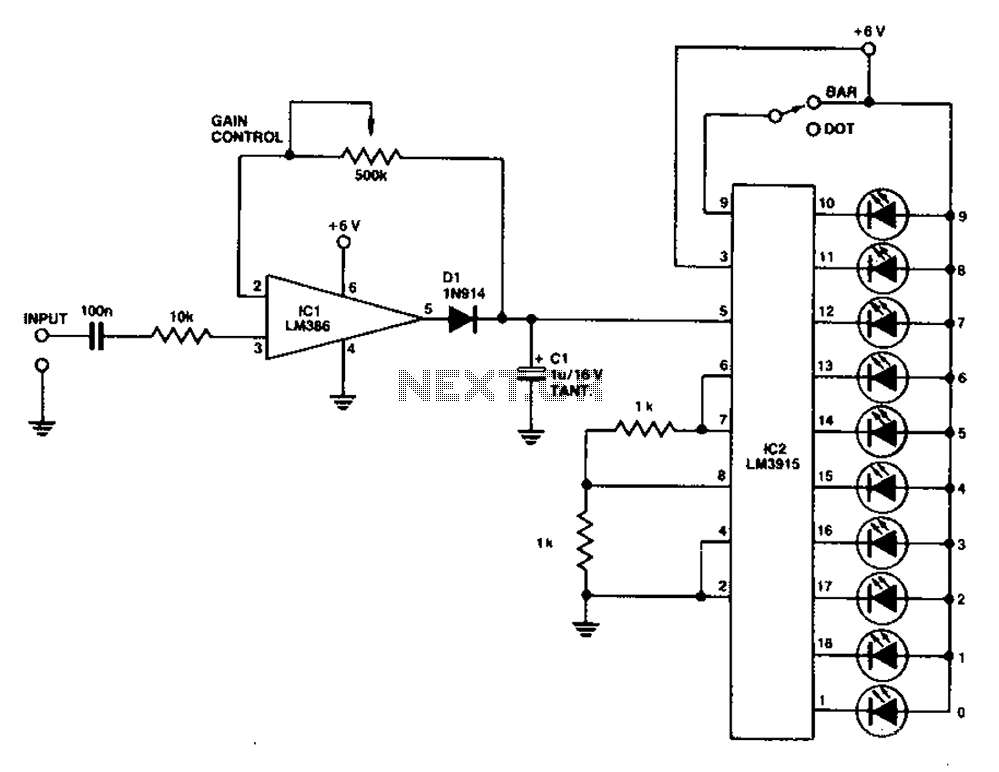
A simple level power meter designed to provide a high-fidelity sound system with a bar or dot matrix display. The green LED display indicates levels from 0 to 7; level 8 is shown in yellow, and level 9 is indicated in red, representing peak power. The circuit also includes gain control for device calibration. Due to its current absorption of 200mA, it is recommended to use a power supply instead of a battery to operate the device.
The described power meter circuit is an essential tool for audio engineers and enthusiasts aiming to monitor audio levels accurately in high-fidelity sound systems. The primary function of the circuit is to visually represent the audio signal levels through a series of LED indicators. The green LEDs signify normal operating levels from 0 to 7, providing a clear and immediate visual feedback to the user. When the audio level reaches 8, the yellow LED activates to indicate a cautionary level, while the red LED at level 9 signals peak power, alerting the user to potential distortion or clipping in the audio output.
In terms of operation, the circuit incorporates a gain control feature that allows for calibration based on the specific characteristics of the audio device being used. This feature is crucial for ensuring that the meter provides accurate readings across different equipment, enabling users to maintain optimal sound quality.
The power requirements of the circuit are significant, with a current draw of 200mA. This level of consumption suggests that a stable external power supply is necessary to ensure consistent performance. Using a battery may lead to inadequate power delivery, resulting in unreliable operation or premature battery depletion. Therefore, a suitable power supply should be selected to meet the current and voltage specifications required by the circuit.
Overall, this simple level power meter circuit is an effective solution for monitoring audio levels, enhancing the user experience in high-fidelity sound applications. Its design considerations, including visual indicators, gain control, and power supply requirements, contribute to its functionality and reliability in professional audio settings.A simple level power meter to provide high-fidelity sound system bar or dot matrix display. Green LED display 0-7; 8 show yellow, red 9, the LED displays peak power. This circu it provides gain control for device calibration. Because this element absorbs 200mA, recommended power supply instead of the battery to run the device.
The described power meter circuit is an essential tool for audio engineers and enthusiasts aiming to monitor audio levels accurately in high-fidelity sound systems. The primary function of the circuit is to visually represent the audio signal levels through a series of LED indicators. The green LEDs signify normal operating levels from 0 to 7, providing a clear and immediate visual feedback to the user. When the audio level reaches 8, the yellow LED activates to indicate a cautionary level, while the red LED at level 9 signals peak power, alerting the user to potential distortion or clipping in the audio output.
In terms of operation, the circuit incorporates a gain control feature that allows for calibration based on the specific characteristics of the audio device being used. This feature is crucial for ensuring that the meter provides accurate readings across different equipment, enabling users to maintain optimal sound quality.
The power requirements of the circuit are significant, with a current draw of 200mA. This level of consumption suggests that a stable external power supply is necessary to ensure consistent performance. Using a battery may lead to inadequate power delivery, resulting in unreliable operation or premature battery depletion. Therefore, a suitable power supply should be selected to meet the current and voltage specifications required by the circuit.
Overall, this simple level power meter circuit is an effective solution for monitoring audio levels, enhancing the user experience in high-fidelity sound applications. Its design considerations, including visual indicators, gain control, and power supply requirements, contribute to its functionality and reliability in professional audio settings.A simple level power meter to provide high-fidelity sound system bar or dot matrix display. Green LED display 0-7; 8 show yellow, red 9, the LED displays peak power. This circu it provides gain control for device calibration. Because this element absorbs 200mA, recommended power supply instead of the battery to run the device.
